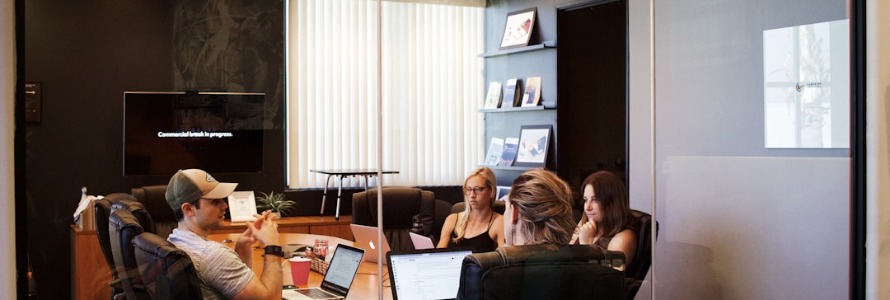
As a writer, student, or professional in any field that involves content creation, one of the most important principles you must adhere to is originality. Not only is it a moral obligation, but avoiding plagiarism is also crucial for maintaining academic integrity, professional reputation, and legal standing. In this article, I’ll walk you through the concept of plagiarism, why it’s important to avoid, and actionable tips to ensure that your work remains original. By the end, you will understand the tools and strategies to protect your work from plagiarism and how to properly cite sources, ensuring that your content stays ethical and credible.
What Is Plagiarism?
Plagiarism is the act of using someone else’s work, ideas, or expressions without proper acknowledgment or permission. This includes everything from copying and pasting text to paraphrasing without giving credit, and even using someone else’s research findings as your own. It’s not only limited to written work but can also extend to images, videos, and any form of intellectual property.
Many people mistakenly believe that plagiarism only applies to copying full sections of someone else’s text. However, even if you paraphrase an idea or claim without citing the original source, it still constitutes plagiarism. This is why it’s essential to understand plagiarism fully and take steps to prevent it in your own work.

Why Is Plagiarism Harmful?
Plagiarism is harmful on multiple levels. For academic purposes, it undermines the trust that educators place in students to produce work that reflects their understanding and personal effort. If you plagiarize, you are not only taking credit for someone else’s hard work but also denying yourself the opportunity to learn and grow.
In the professional realm, plagiarism can damage your career and professional reputation. If you’re caught plagiarizing, it may result in public embarrassment, job loss, and the destruction of relationships with colleagues or clients. Additionally, plagiarism can lead to legal consequences, as using someone else’s intellectual property without permission can be considered copyright infringement, which has serious legal ramifications.
Most importantly, plagiarism goes against the values of honesty and integrity. As creators, it’s our responsibility to respect others’ intellectual property and contribute original ideas to the broader conversation. Upholding these values not only maintains your credibility but also ensures that you’re playing an active role in fostering creativity and progress.

How to Avoid Plagiarism: Key Strategies
There are several strategies you can adopt to avoid plagiarism, and many of them are easy to implement. In fact, by creating a habit of following proper citation practices and making originality a priority, you can ensure that your work remains both ethical and credible.
1. Understand What Constitutes Plagiarism
First and foremost, you must understand what plagiarism entails. Plagiarism can occur in many different forms:
- Direct plagiarism: Copying someone else’s words verbatim without quotation marks or citation.
- Paraphrasing plagiarism: Rewriting someone else’s ideas in your own words without giving credit.
- Mosaic plagiarism: Borrowing phrases or ideas from a source and mixing them into your work without citation.
- Self-plagiarism: Reusing your previous work without acknowledgment or presenting it as new.
When in doubt, always cite the source, even if you are just borrowing a small idea or paraphrasing.
2. Properly Cite Your Sources
One of the easiest ways to avoid plagiarism is to properly cite all the sources you use in your work. Whether you’re writing an essay, blog post, research paper, or report, proper citation is essential to maintaining academic and professional integrity.
There are several citation styles used in various disciplines, including APA, MLA, Chicago, and Harvard. The most common citation format for academic writing in the social sciences is APA (American Psychological Association) style. You must know which citation style to use and apply it consistently throughout your work.
Here are some examples of how to cite sources in APA 7th edition:
Books:
- Last Name, First Initial. (Year). Title of the book. Publisher.
Journal Articles:
- Last Name, First Initial. (Year). Title of article. Title of Journal, Volume(Issue), page range. https://doi.org/xxxxxx
Websites:
- Last Name, First Initial. (Year, Month Day). Title of webpage. Website Name. URL
When citing sources in-text, the general rule is to include the author’s last name and the year of publication, like this: (Smith, 2020). For direct quotes, include the page number as well: (Smith, 2020, p. 15).
By taking time to cite sources carefully, you not only avoid plagiarism but also contribute to the body of work within your field.

3. Use Quotation Marks for Direct Quotes
If you are directly quoting a source, it’s essential to use quotation marks around the exact words. You must also provide proper attribution by citing the author, date, and page number. For example:
According to Johnson (2019), “Plagiarism is a serious academic offense that can have long-lasting consequences” (p. 45).
This approach ensures that you are clear about which ideas come from another author, maintaining the integrity of your work.
4. Paraphrase Effectively
Paraphrasing is the process of rewording someone else’s ideas in your own words. While paraphrasing is a great way to demonstrate understanding and avoid direct copying, it’s essential to ensure that your paraphrase is sufficiently different from the original text. Simply changing a few words around or using synonyms is not enough—it’s important to transform the structure and flow of the original sentence.
Furthermore, even if you paraphrase, you must still cite the source of the original idea. Paraphrasing without citation is considered plagiarism, so always give credit to the original author.
5. Utilize Plagiarism Detection Tools
Technology has made it easier than ever to check whether your work contains unintentional plagiarism. There are several plagiarism detection tools available that compare your content against a vast database of sources. Popular tools include Turnitin, Grammarly, and Copyscape. These tools can help identify passages that might need further citation or revision.
While these tools are not perfect, they can be useful for spotting potential issues before submitting your work. However, it’s crucial to note that no plagiarism detection tool is foolproof. They may not catch every instance of plagiarism, so it’s essential to remain diligent and adhere to ethical writing practices.

6. Take Notes Carefully
When researching and taking notes, it’s easy to get caught up in the ideas of others and accidentally forget to record the source of a particular quote or idea. To prevent this, make sure to record all relevant citation information while taking notes—this includes the author’s name, title of the work, publication year, and page numbers for direct quotes.
This habit can save you significant time and trouble when you’re writing your final draft. You will have all the information you need to properly cite your sources without scrambling to find it later.
7. Use Your Own Voice
While research is essential for informing your work, you should aim to present the material in your own voice. Writing your ideas clearly and uniquely will ensure that your work stands apart from the sources you’re referencing. The more you integrate your own insights and analysis into your writing, the less likely you will be to rely too heavily on other people’s work.
Remember, the purpose of research is not to copy and paste but to build on existing knowledge with your own perspective and critical thinking. This is what makes academic and professional writing valuable and original.
8. Create a Proper Reference List
At the end of your work, make sure to include a properly formatted reference list that gives full citation details for each source you cited in the text. This allows readers to trace your sources and verify the accuracy of the information you’ve used.
Each citation style has its specific rules for formatting references, so it’s important to refer to a reliable style guide to ensure accuracy.
9. Consult Your Institution’s or Employer’s Policy on Plagiarism
Many institutions and employers have specific guidelines and policies on plagiarism. Familiarize yourself with these policies to ensure that you’re in compliance with their standards. If in doubt, always seek clarification from your instructor or supervisor about how to cite sources properly.

Conclusion
Avoiding plagiarism is a fundamental aspect of writing and content creation. By understanding what plagiarism is, utilizing proper citation techniques, and consistently producing original work, you can maintain both your credibility and integrity as a writer. It’s essential to make these practices a habit—whether you’re a student, academic professional, or content creator—to ensure your work is always ethical and respectful of others’ intellectual property.
Plagiarism can have severe consequences, but with the right strategies in place, you can avoid it and contribute original, high-quality content to your field. Keep these tips in mind, and you’ll be well on your way to becoming a responsible and trustworthy writer.

References
American Psychological Association. (2020). Publication manual of the American Psychological Association (7th ed.). American Psychological Association.
Grammarly. (n.d.). Plagiarism checker. Grammarly. https://www.grammarly.com/plagiarism-checker
Johnson, A. (2019). The ethics of writing: A guide to avoiding plagiarism. Academic Press.
Smith, J. (2020). Plagiarism in academia: Prevention and consequences. University Press.


